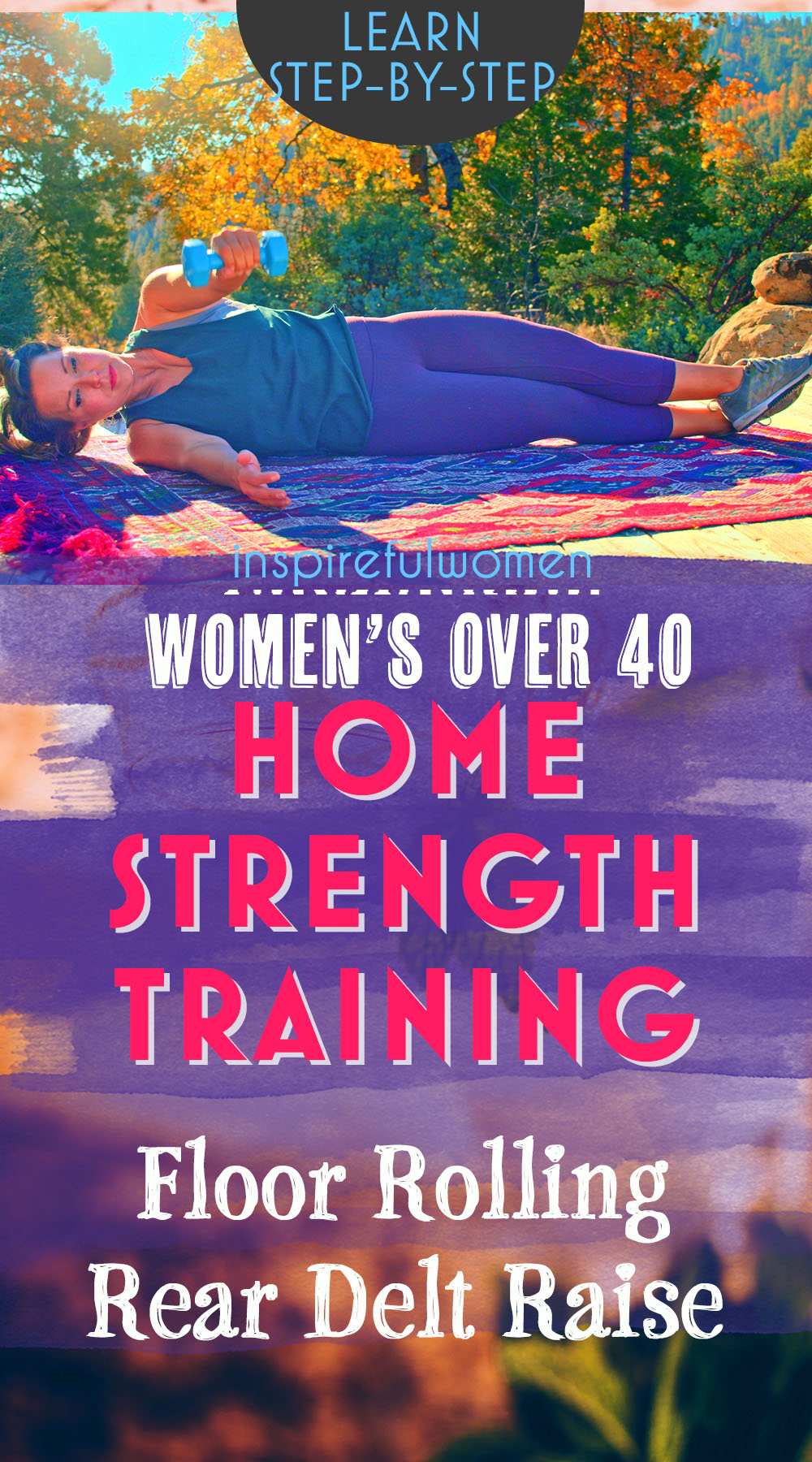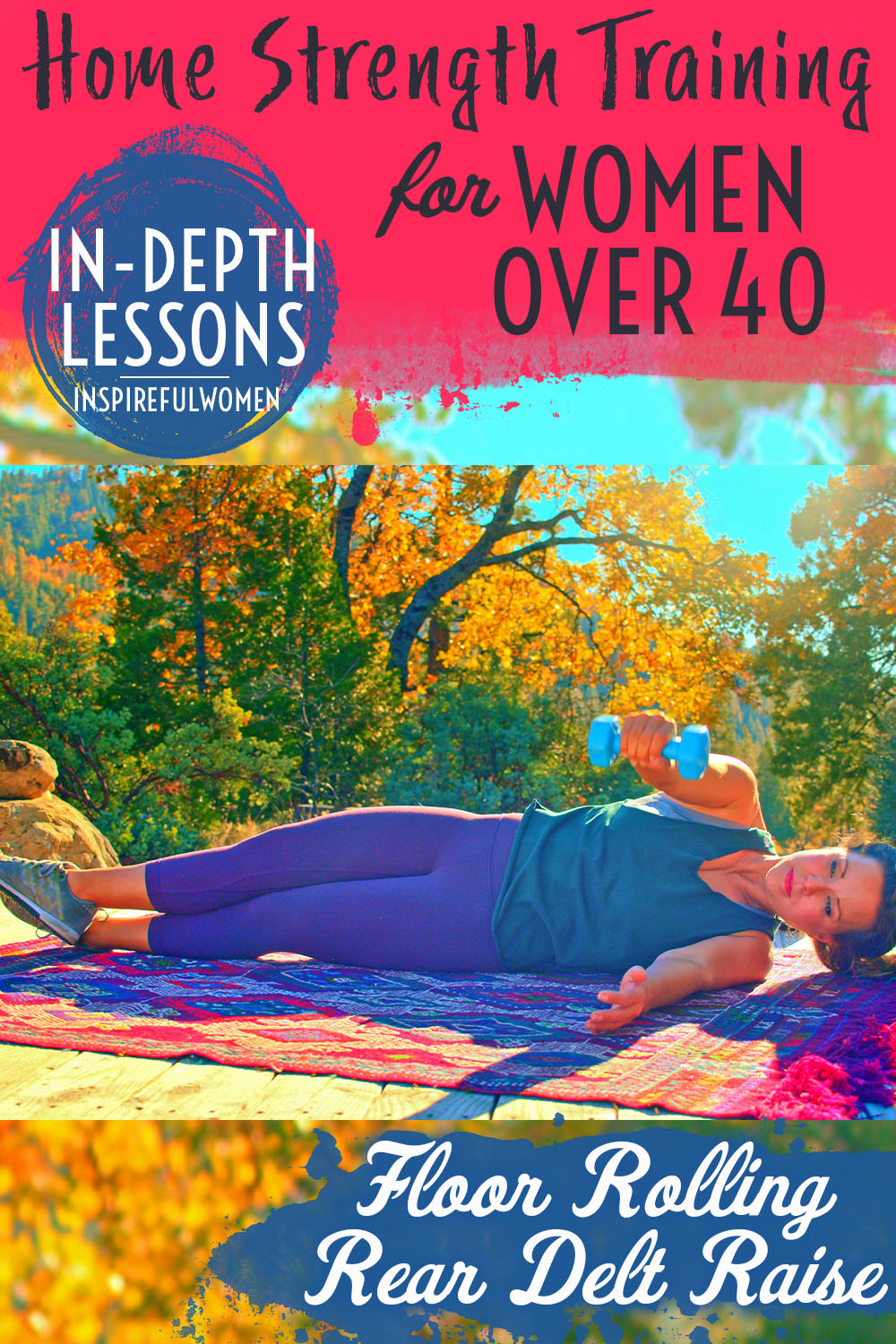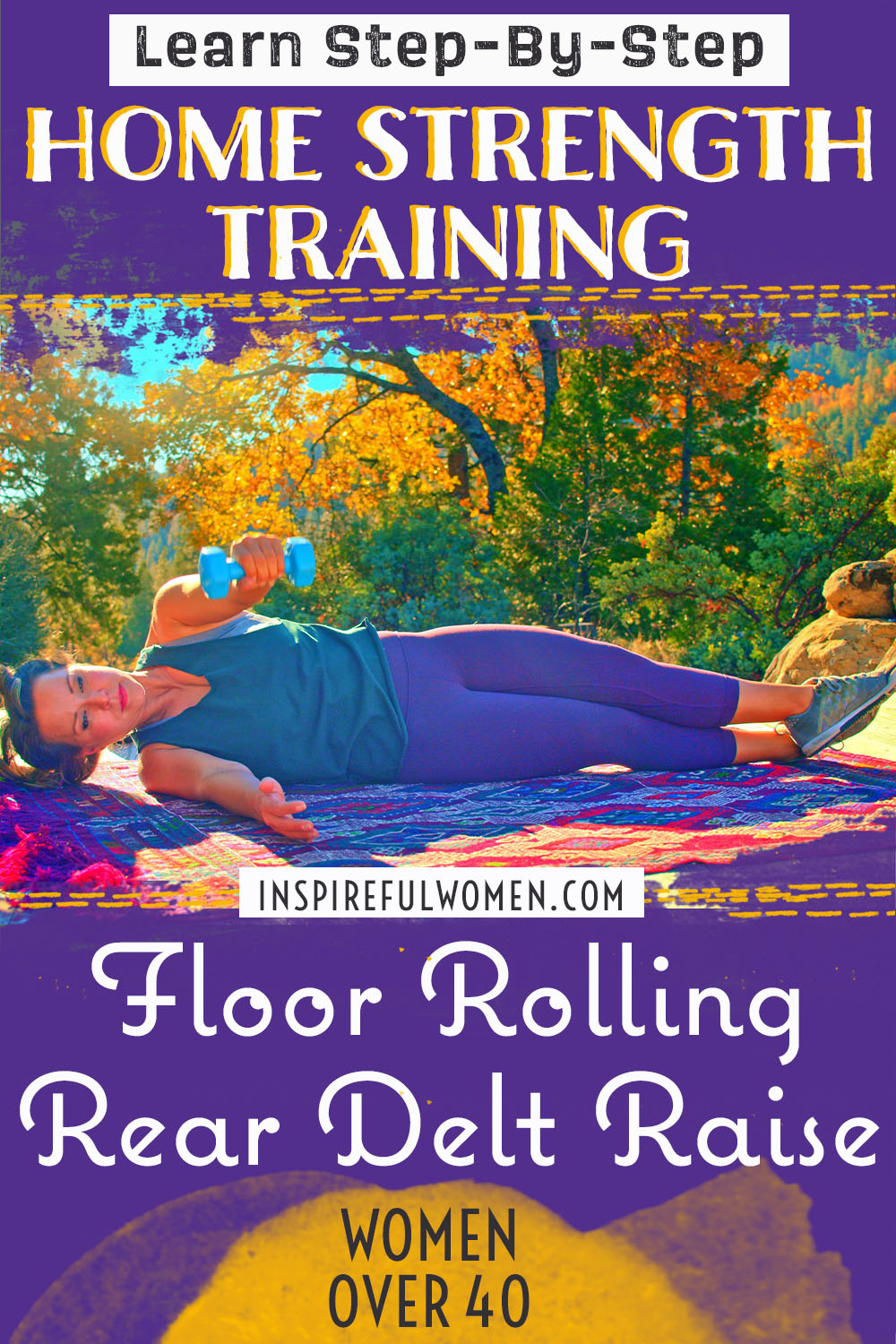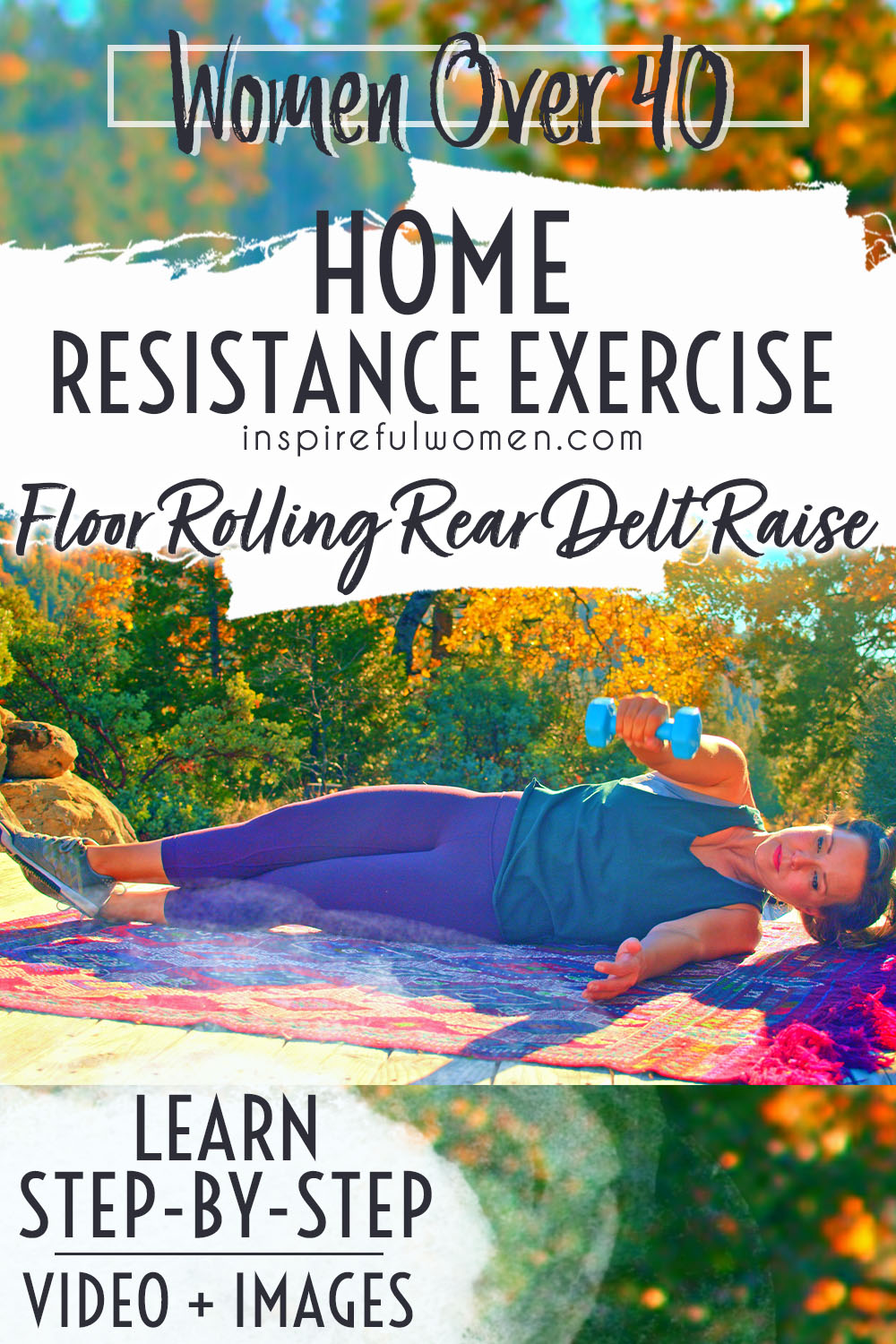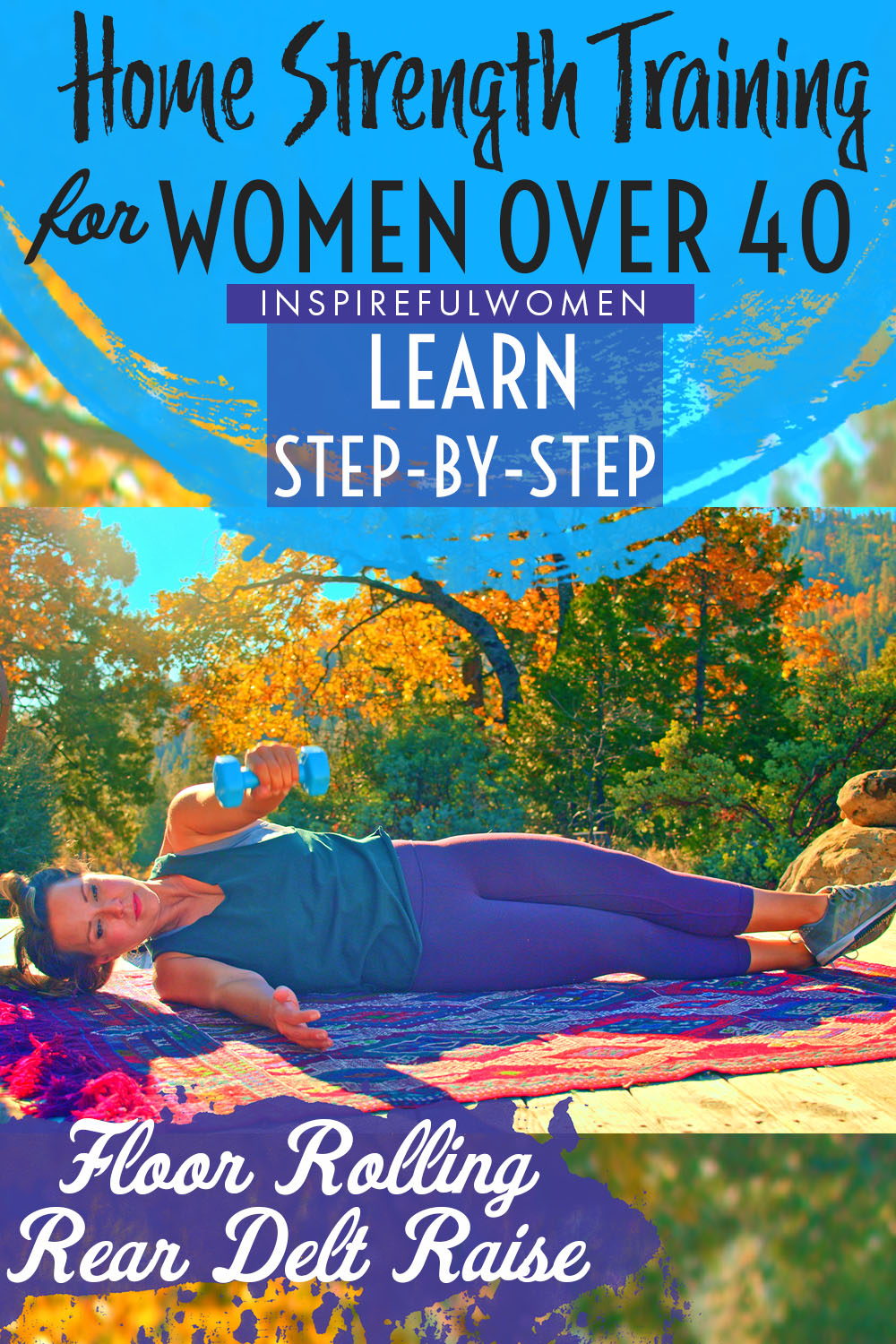Lying Rolling Rear Delt Raise - Dumbbells
How to Do Floor Rolling Rear Delt Raise w/ Dumbbells at Home | In-Depth Guide [VISUAL LEARNERS] Intermediate
Proper Form & Common Mistakes | Home Strength Training
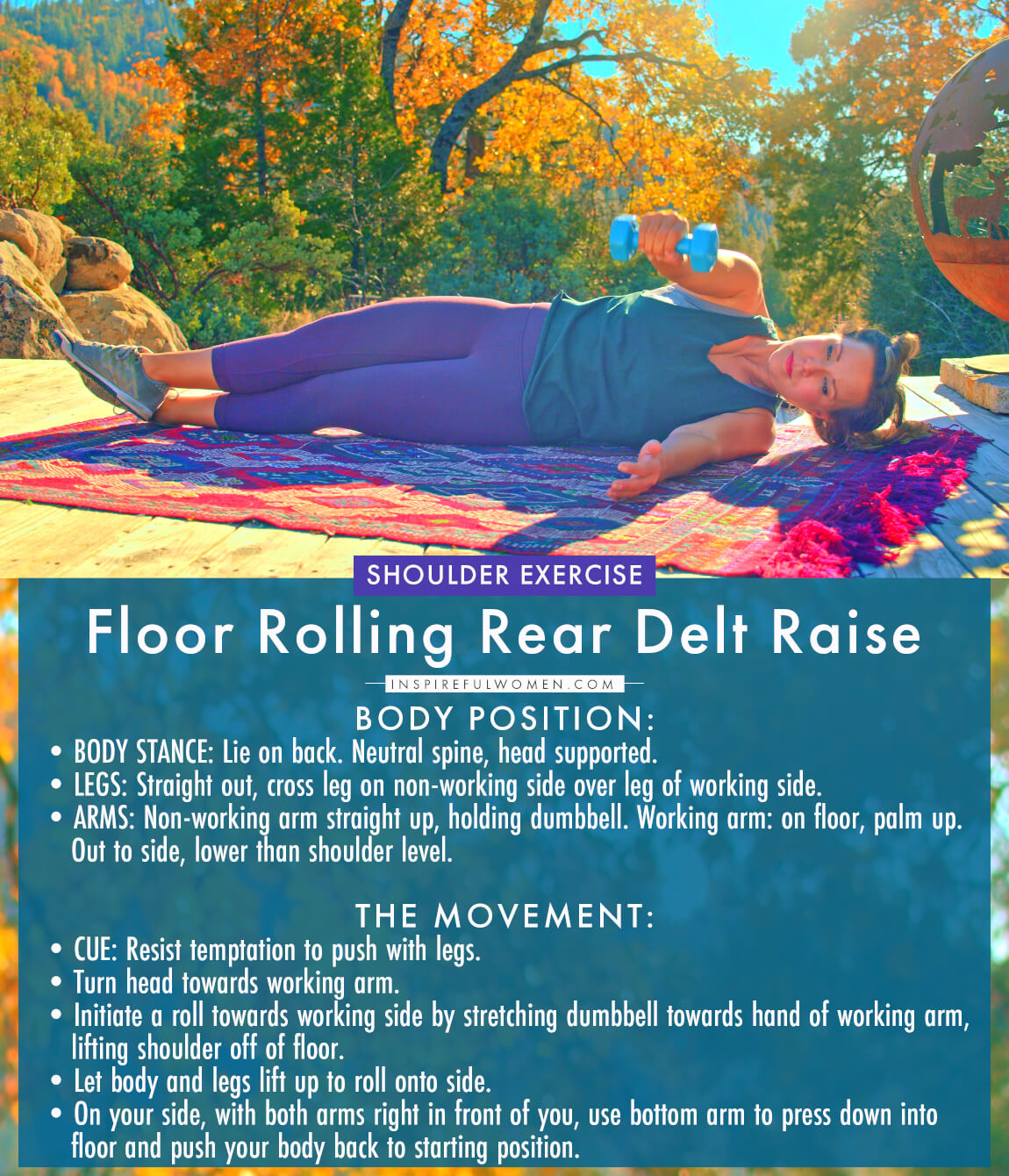
WHAT DO YOU WANT TO SEE?
QUICK DEMO
QUICK DEMO
MUSCLES THIS WORKS
MUSCLES
MAIN MUSCLES WORKED IN the Dumbbell Floor Rolling Rear Delt Raise
REAR DELTOID
OTHER MUSCLES WORKED:
- Anterior and lateral portions of the deltoid
- Rotator cuff muscles
- Scapular muscles (rhomboids, traps, serratus, pectoralis, lats, levator)
STARTING POINTERS
Starting Pointers
WHAT WE'RE DOING TODAY
The lying rolling rear delt raise will work the rear deltoid concentrically and both arms isometrically. This version of the lying rolling rear delt raise uses a dumbbell held by the “non-working” arm. The use of the dumbbell serves three purposes: 1) The weight helps to initiate the rolling, making the beginning of the exercise easier; 2) The rear deltoid, triceps, and teres major of the “non-working” arm will need to work harder isometrically to hold the dumbbell in the side-lying position; 3) The working arm (bottom arm) will need to work harder to push off the floor and return the body to the starting position.
The difference between a regular rear delt row where the hands begin in line with the shoulder, and the wide row is that in the wide row: the lats and triceps will be less active, so the rear deltoids and scapular retractors will be more active. Because the hands are further apart the pecs will get more of a stretch in the end range.
HOW TO DO THE EXERCISE
LOOKS
HOW Dumbbell Floor Lying Rolling Rear Delt Raises SHAPE OUR BODY
Balanced and toned shoulder, arms, nice upright posture.
PROPER FORM
PROPER FORM: Dumbbell Floor Rolling Rear Delt Raises
EQUIPMENT, SETS & REPS
EQUIPMENT
Mat
SUGGESTED STARTING WEIGHT FOR WOMEN:
2 to 8 lbs.
SETS & REPS:
1 set of 6-8 reps - only until your form fails - when you are unable to complete a rep with proper form and control.
PACE:
Controlled up and down - not jerking upwards and dropping down.
BODY POSITION
BODY POSITION FOR THE Dumbbell Floor Rolling Rear Delt Raise
BODY STANCE: Lie face up on the ground, legs straight out, cross your leg that is on the non-working side over your leg of the working side. Neutral spine.
ARMS: Non-working arm straight up in the air - flexed about 80 degrees, elbow straight but not locked; holding the dumbbell with a neutral grip. Working arm abducted about 70- 80 degrees out to your side, lying on the floor, palm up.
NECK: Place a small folded towel under your head - this is mostly to support your head when you are lying on your side, it should not be straining or hanging.
HOW TO DO
HOW TO DO Dumbbell Lying Rolling Rear Delt RaiseS
CUE: It is easy to “cheat” in this exercise - stay focused, move slowly and be conscious of which muscles you are using. Resist the temptation to push with your legs.
Turn your head towards your working arm.
Lean your non-working arm over towards your working arm, and let your shoulder lift off of the floor. This will initiate a roll. Let your body and legs roll onto the side.
When you are on your side with both arms right in front of you, use your bottom arm (working arm) to press down into the floor and push your body back to the starting position.
HOW TO SAFELY GET OUT OF THE EXERCISE
When you are on your side, set the dumbbell on to the floor. Use your arms to push up to sitting. Move one leg forward to the half-kneeling position and push up to standing.
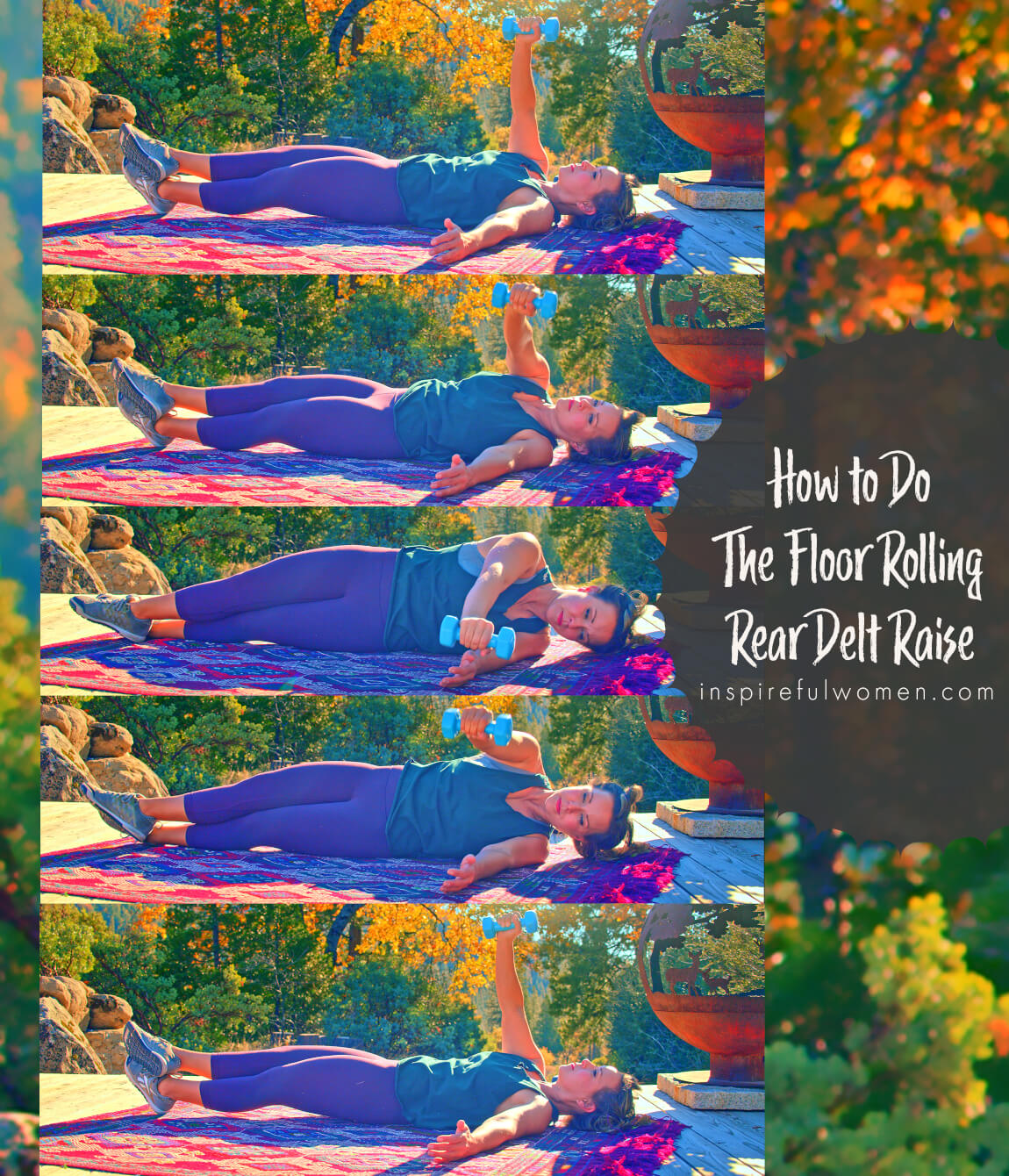
COMMON MISTAKES
COMMON MISTAKES
WHAT TO AVOID WITH THE Dumbbell Lying Rolling Rear Delt Raise
KEY TIP:
Guess what? Good news! Many avoids are the same for most movements. Once you learn the basics, there's really only a few extra avoids for each individual movement.
1. Avoid Swinging Back Up Momentum
AVOID: Avoid using the non-working arm to initiate the movement.
WHAT TO DO:
- It is tempting to lift the non-working arm up to initiate the movement from the side-lying position to return to face up.
- Focus on pushing into the floor with the working arm and keeping the non-working arm right over the working arm - avoid lifting it up.
WHAT WE'RE DOING TODAY
WHAT & WHY
BENEFITS OF TRAINING THE REAR DELTOID
WHAT
BODYWEIGHT EXERCISES FOR THE BACK OF OUR SHOULDER
This group of rear deltoid exercises uses body weight as resistance. The body weight exercises involve holding the body still and using the rear deltoid muscle to move the body. Using body weight for resistance has many benefits, the most obvious one is that you don’t need any equipment, making them a good choice for home or travel workouts. Body weight exercises usually require more balance, control, and stability; they tend to work the whole body, making them very functional, and efficient when you are short on time.
Body weight training improves stability and control, adding some of these exercises into your workout program will improve your ability to lift more. An analogy would be - trying to hang a bird feeder from a small branch of a tree - the branch would sag down. If the branch was more stable and didn’t bend, the branch would not sag down. Building the strength of the muscles of the upper back and shoulder will help you be able to lift more weight with your arms.
WHY BOTHER DOING IT?
WHY
WHY DO WE EVEN CARE?
STRENGTHEN THE BACK OF US TO BALANCE THE FRONT
Many common weight training exercises are done in front or to the side of the body, these are great for working the front and middle portions of the deltoid muscles. In order to balance the strength of these parts of the muscle, it is important to include exercises that target the rear or posterior fibers of the deltoid muscle. The body weight rear deltoid exercises will target the rear deltoid while working all of the muscles of the shoulder together to stabilize the joint and control the movement.
SOOOO MUCH ACTIVITY WITH OUR FRONTS
Most daily activities are carried out in front of our bodies - carrying heavy loads (kids, bags), computer work, driving, reading, eating, cooking, and pushing strollers and wheelbarrows. All of this activity tightens the muscles of the chest and encourages rounding of the upper back and shoulders. Over time the muscles of the back become weaker from disuse. This exercise works to correct this imbalance and improve posture.
The bodyweight exercises are really nice because they work on increasing the endurance of the muscles that hold you in the upright position. That means that you are training the muscle to work for a longer period of time. This is important because that is the way that we use the posture muscles - we are sitting or standing in an upright position for most of the day. We might be standing nice and tall at the beginning of the day but as the day goes on, we start to slouch. Exercise is not only about strengthening muscles, it is about teaching your body how to use them.
EVERYDAY LIFE
EVERYDAY LIFE &
MUSCLE FUNCTION
HOW WE USE OUR REAR DELTOID IN EVERYDAY LIFE
1. STABILIZES THE SHOULDER
- Keeps the head of the humerus centered in the socket (glenoid fossa)
- Pushing up from the floor
- Lifting
- Carrying, especially heavy loads
- Weeding
- Helps to prevent damage to the shoulder joint- wear and tear over time due to poor movement patterns
2. MOVES THE ARM BACK (EXTENSION)
- Reaching behind the back
- Pulling items towards you
- Reaching into the back seat
3. HELPS TO MAINTAIN AN UPRIGHT POSTURE
4. ROTATING THE UPPER ARM OUTWARD (EXTERNAL ROTATION)
- Putting your hand in the back pocket (palm down)
- Turning outstretched arm with palm up for receiving change
- Catching a ball
- Reaching the back of your head
- Washing/brushing/drying hair
HOW TO FEEL WHAT MUSCLE IS WORKING
How to Feel What Muscle is Working
Take your opposite hand and place it on top of your shoulder. You should feel a hard, flat surface right on top close to the shoulder joint. That is part of the shoulder blade called the acromion process. Drop your fingers right below that bony surface. Hold your upper arm up (approximately 50 - 60 degrees of abduction) with the elbow bent. Push the upper arm back. You should feel the rear fibers of the deltoid activate under your fingers. It can help to push your elbow into the back of the chair or a wall.
SCIENCY STUFF
SCIENCY STUFF
SPIFFILICIOUS FACTS ABOUT MUSCLES & MOVES
The deltoid muscle lies on top of the shoulder and crosses the shoulder joint. The deltoid muscle consists of three portions, based on how the muscle fibers run, the anterior (front), lateral (middle), and posterior (rear) deltoids. The three parts of the deltoid muscle can move the arm in different directions but they all work together to stabilize the joint.
The posterior or rear fibers of the muscle are located on the back of the shoulder joint - originating just below the spine (the long horizontal part of the shoulder blade) of the scapula and insert on the humerus (upper arm bone). The posterior deltoid is very important for balancing out the frequently overworked anterior deltoid and hours of slouched posture during sitting activities like computer use and driving, as well as household work - cooking, washing, carrying, lifting, and chopping. We are constantly doing activities that promote a rounded shoulder and upper back posture; it is important to spend some time working on the muscles that balance that posture out.
This movement uses the weight of the body for the load (resistance) used to work the muscles of the back that help to balance the frequently overdeveloped muscles of the chest. Body weight rear deltoid exercises focus on the stability of the shoulder joint and shoulder blade for healthier movement of the shoulder joint and improved posture.
ALLLL MUSCLES & WHEN
ALL MUSCLES WORKING & WHEN DURING THE Dumbbell Floor Lying Rolling Rear Delt Raise
The non-working arm is held up to the front of the body by isometric contraction of the muscles surrounding the shoulder joint.
The movement begins as the head turns to the side of the working arm and the non-working arm moves over to the side of the working arm. The weight of the non-working arm and dumbbell moving across the torso pulls the body, along with the core muscles, into side lying. The more weight used, the easier it will be to initiate the roll.
Once in side-lying, the rear deltoid of the non-working (top arm) arm works isometrically with the triceps and teres major to hold the arm up. The rear deltoid of the working arm will contract concentrically to push down into the floor and continue with a strong isometric contraction to push the body weight off of the arm and return to lying face up.
PIN IT FOR LATER!
